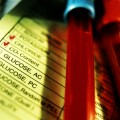Make A Game Plan To Lower Type 2 Diabetes Risks
You’ve probably heard a lot about how many more adults today get type 2 diabetes. It affects almost 400 million people across the entire world, and in the United States (US), about 1 in 10 adults.
In addition, another 80 Americans have pre-diabetes. This is a condition in which blood glucose levels are higher than normal, but not high enough to be called diabetes. However, if you have pre-diabetes you have a great risk of getting diabetes.
Diabetes is also linked with many other health issues, including kidney problems, nerve damage, blindness, heart attack, and stroke. So it is very important to prevent diabetes, or take good care of yourself if you do have it.
Diabetes care isn’t always easy, so the experts at the National Diabetes Education Program have put together a diabetes care booklet with a simple message: small steps can lead to big rewards.
Make a game plan for diabetes care
When you have diabetes, there’s a lot you need to do to take care of yourself—check your blood glucose, take all your medicines on time, follow your meal plan, exercise, and count carbs. Doing all this is hard, and sometimes it can seem like there’s so much to do that you don’t know where to start.
For this reason, it’s important to keep things simple! So, the NDEP plan begins with 3 simple steps:
- Set a weight loss goal.
- Make healthy food choices.
- Move more.
Here’s a more in-depth look at what goes into each of these small steps.
1) Set a weight loss goal
Weight loss is essential to prevent diabetes and pre-diabetes. If you already have the disease, losing weight makes it easier to keep your blood glucose under control. Past studies have found that if you lose just a twentieth to tenth of your current weight it can lead to lots of health benefits (such as a lower risk of getting diabetes), so this is a good goal to have. If you weigh 200 pounds, this means you must lose 10 to 20 pounds.
How do you do this? Steps 2 and 3 will help make your goal a reality.
2) Make healthy food choices
Eat in a healthy way to reach your weight loss goal. The basic rule is that to lose weight you need to burn more calories than you eat each day. While there are many different weight loss plans to choose from, a healthy eating plan should include:
- Plenty of fresh fruits and vegetables.
- Healthy fats, such as those found in salmon, mackerel, sardines, walnuts, almonds, and avocados.
- Lean protein from chicken, fish, beans, lentils, or tofu.
- Whole grains from breads, cereals, brown rice, and oatmeal.
- Small amounts of sweets—treating yourself once in a while is okay.
- Try to avoid packaged and processed foods, which are usually high in salt, sugar, and unhealthy fats.
3) Move more
The more you move each day, the more calories you’ll burn, and the more weight you’ll lose. A good starting point for a daily exercise goal is 30 minutes of moderate-intensity exercise, 5 days a week. Examples of moderate-intensity exercise include:
- Dancing
- Brisk walking
- Swimming laps
- Riding a bike
- Jogging
- Any other physical activity that gets your heart rate up—this could be house work, taking the stairs instead of the elevator, or playing with your kids
You don’t have to do all 30 minutes of exercise at once. You can break it up into two 15-minute blocks, or three 10-minute blocks. Sometimes this is easier, especially when you are just starting your exercise plan. It’s important to start slow, and not push yourself too much, especially if you’re feeling tired.
The take home points
- Diabetes is a dangerous disease and caring for it can be a challenge.
- The good news is that you can lower your chance of getting diabetes if you follow the 3 simple steps listed above.
- The NDEP diabetes prevention game plan booklet is available for free at http://ndep.nih.gov/publications/PublicationDetail.aspx?PubId=71,
- If you have any questions about what you read here or about diabetes in general, talk to your healthcare provider at your next office visit.












